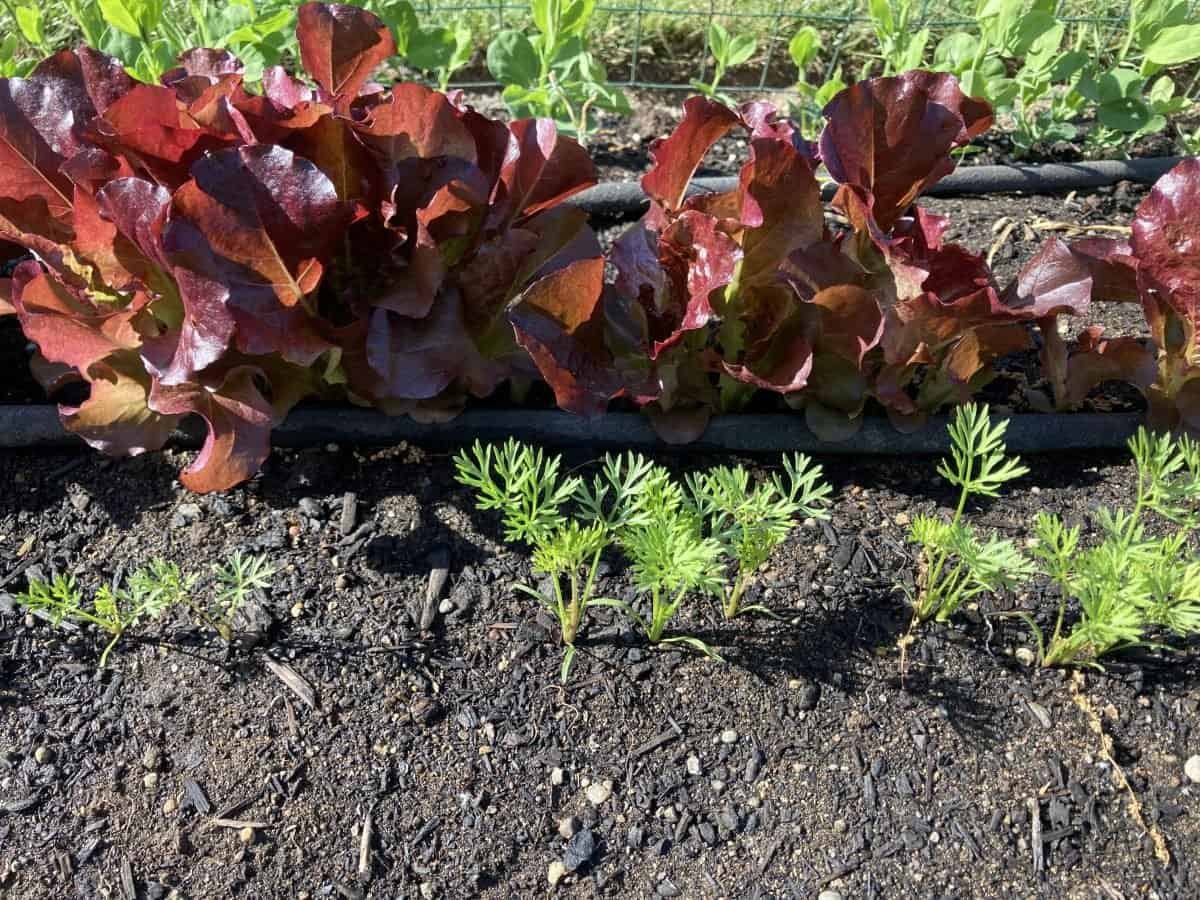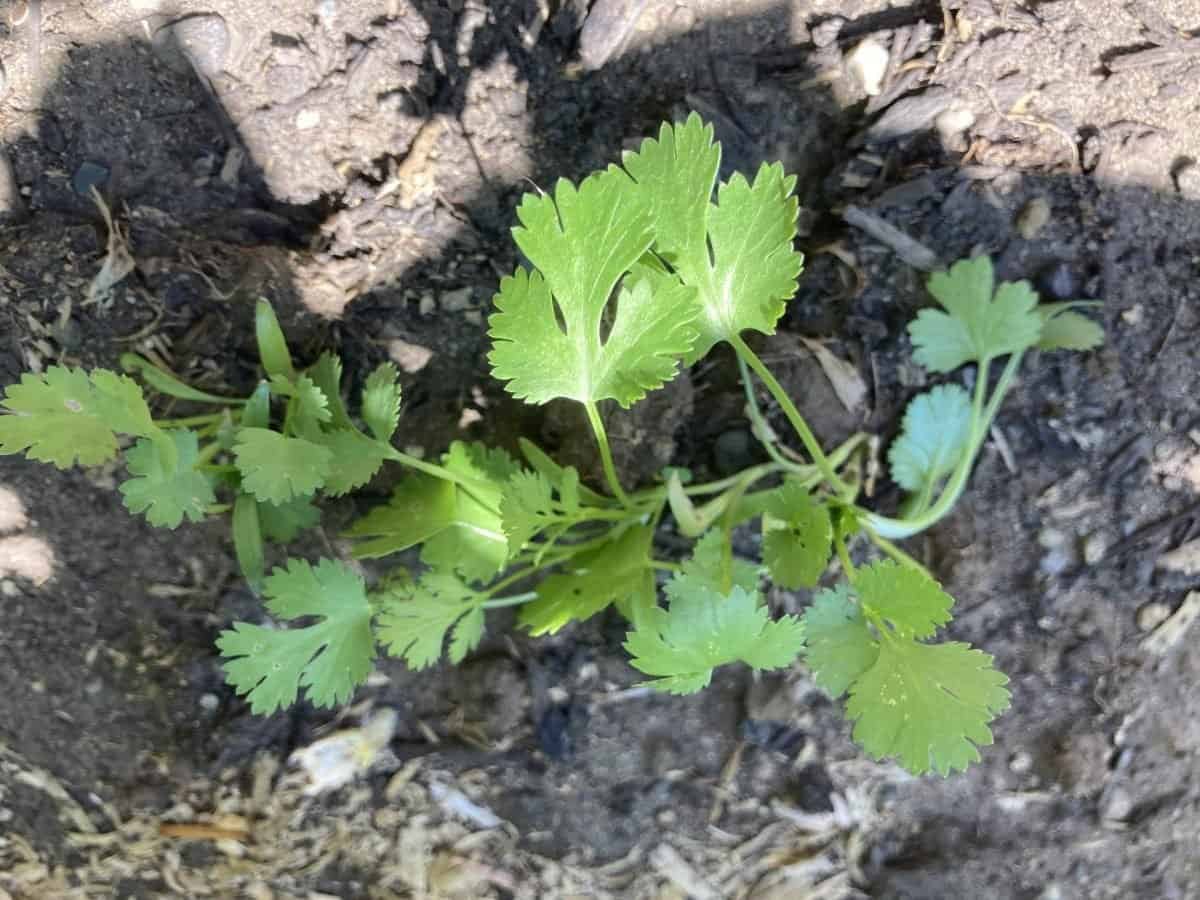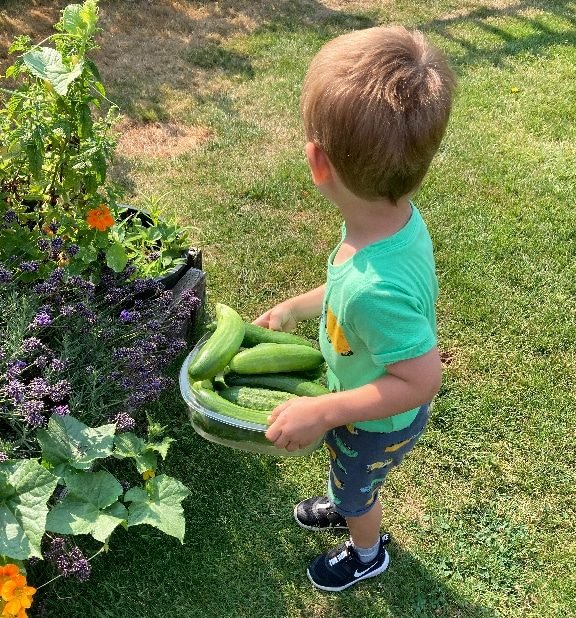What is blossom end rot? It is a disease that causes a dark brown spot on the vegetable at the blossom end that resembles a rotten area of the fruit. It can some times look like leather.
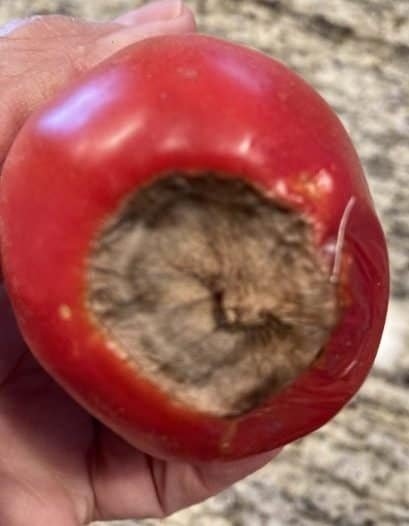
In this article, I will explain what blossom end rot is how to prevent it and what to do if you have plants affected by blossom end rot.
It not only looks bad but that part of the vegetable must be cut off and not eaten if you try to salvage the vegetable in most cases it is best to discard the vegetable.
It causes the vegetable to break down and rot where the blossom was on the vegetable and reduces the overall yield of the plant.
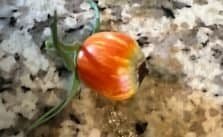
In 2021 I had a severe issue with blossom end rot on my tomatoes and zucchini, during our scorching summer with many days of summer over 90 and 100 degrees, I was watering daily which I discovered was causing my blossom end rot.
In 2022 I consistently watered by using a drip water system watering every 3rd or 4th day which resulted in no issues not one tomato or zucchini with blossom end rot and we still had scorching heat with temperatures over 90 and 100 degrees.
Plants affected by blossom end rot
The plants that are affected by blossom end rot are tomatoes, peppers, squash, and eggplant although it can impact other vegetables.
Signs of blossom end rot
When the vegetable is first set on you will notice a rotten spot on the vegetable. You will notice a small brown depressed area on the vegetable as the vegetable grows so will the damaged area. It will resemble a brown leathery spot that is depressed in the vegetable.
Cause
Before I go into details about the cause I want you to know you can correct the issues that cause blossom end rot with the plants affected to reduce or eliminate the impact on the plants and the vegetables.
In 2022 I had no issues with blossom end rot due to the change in my watering pattern.
Blossom end rot is caused by the lack of calcium which can be for several reasons, #1 in my book is over watering which depletes the soil of calcium and other nutrients.
It can be from too little watering but that is less likely, watering once a week deeply will reduce the chance of this being the cause.
The PH can be checked to see if the PH levels are between 6.0 and 7.0 for the best conditions for vegetables.
Do not use nitrogen-rich fertilizers when amending the soil too much nitrogen can cause blossom end rot.
Damage to the roots can cause blossom end rot.
Now that we know what blossom end rot is and what causes it let’s look at what to do to reduce the chance of blossom end rot.
Prevention tips to reduce the chance of blossom end rot
The first thing I would recommend you do is water consistently once a week deeply which can improve conditions for your plants the most. Most plants need 1 inch of water per week, if in an extreme heatwave you can increase water amounts but do not water more often.
Check your PH levels to make sure they are between 6.0 and 7.0 and periodically have your soil tested for calcium levels. You can add ground eggshells, lime, or bonemeal to improve calcium levels.
When planting your plants make sure you use COF fertilizer to amend the soil to provide your plants with the best nutrients.
Another way I add calcium to the soil is by pulverizing eggshells I have saved from the kitchen by sprinkling them around the drip line of the plants. This is not only a good nutrient but also helps to discourage slugs and snails from eating your plants.
Compost and mulch your plants so that the moisture is retained by the plant and the roots are kept cool which is critical to the plants. You can use many things to compost, grass clippings, mulches, and larger rocks.
If you are to dig around the plants be careful to not damage the roots, this is another good reason to compost and use mulches that protect the roots.
When you are staking or putting cages around your plants do this before the roots are established so that you do not harm the roots.
Last suggestion if you have blossom end rot appear on your vegetables
If your vegetables have blossom end rot I would recommend you change watering patterns to reduce the frequency, and water deeper less often.
Gypsum can be added to the soil at the first sight of blossom end rot on your tomatoes to prevent new tomatoes from developing it on them. Take one handful or scoop of gypsum and spread it around the base of the tomato and water in thoroughly.
New fruit should not have blossom end rot by applying gypsum.
Pick and discard the vegetables affected, and add liquid calcium to get to your plants quickly.
Make sure you have mulched your plants to allow them to retain the water you provide them while keeping the roots cool.

By following these suggestions you should be able to grow and harvest a bountiful supply of great-tasting vegetables that also look appealingly great like the ones above.
In 2023 I did not have one tomato or pepper that was impacted with blossom end rot which I contributed to consistent watering every 3 days with a drip system and mulching all of my plants.
See my list of the 11 Best Tomatoes to grow.
I hope that this article was helpful for you to understand What is Blossom End Rot and how to reduce the chance of your plants and fruit from getting it.
Happy Gardening from the Urban Gardener!

